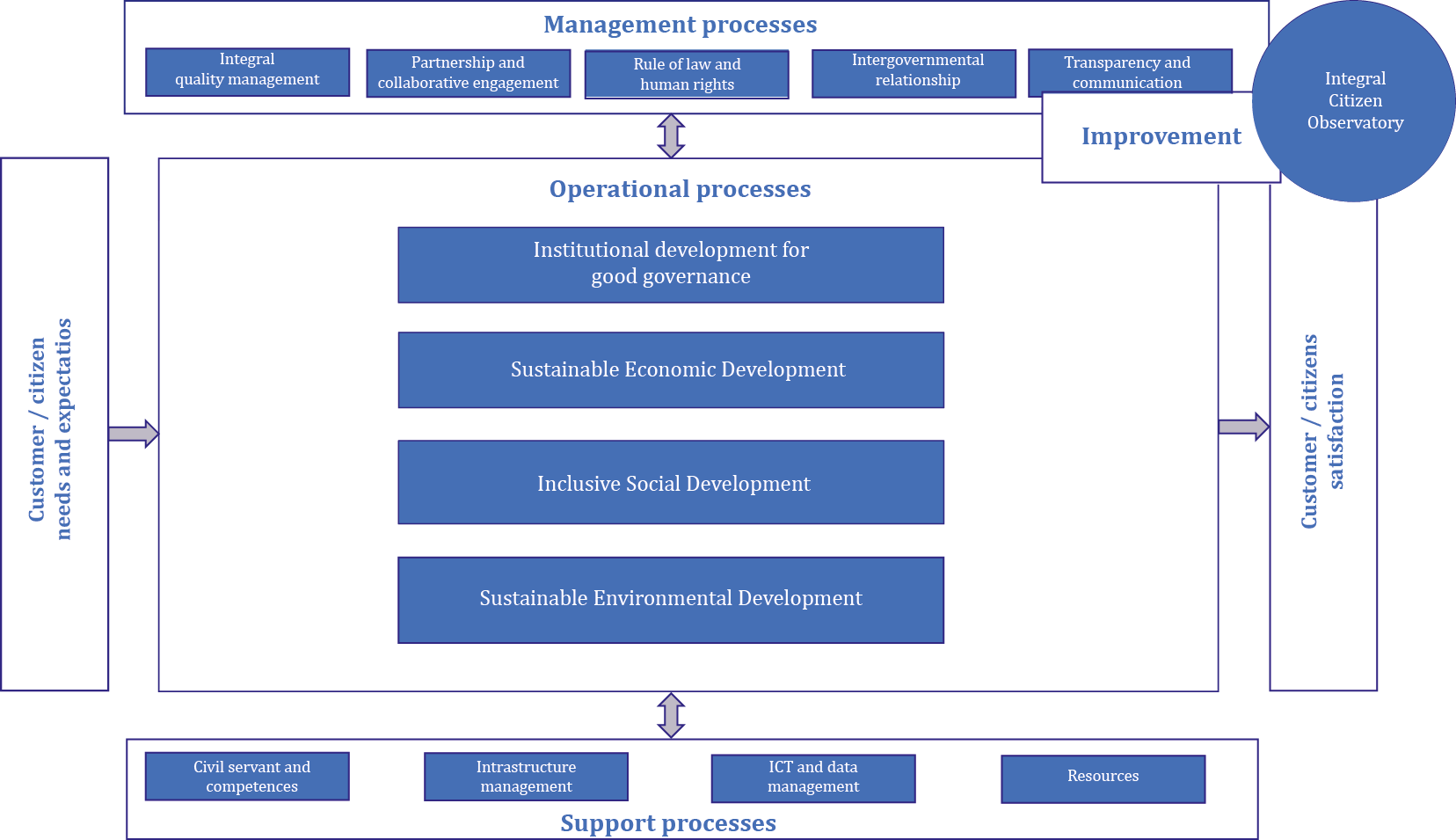Quality management systems — Guidelines for the application of ISO 9001 in local government
ANNEX B
Processes for integral quality management
The graph in Figure B.1 shows an example of how a local government can effectively adopt the process approach. Usually, local governments use a government plan or development plan to conduct their activities, which is why these guidelines recommend that Annexes A and B be used to make a processes map that shows the interrelation of actions, processes and a place where public servants can see their contribution in achieving the objectives. The processes map should have an integral scope for all departments.
Figure B.1 shows three types of processes for local governments. The management processes define the type of decision making, the agreements and the liaison with citizens and relevant interested parties. The operational processes concern the core business of government and the support processes focus on activities that help the operational processes to work (e.g. resources, infrastructure).
The local government should
identify the needs and expectations of the relevant interested parties in order
to produce products and services for their satisfaction. In the graphic, there
is a special process for improvement. It is important this process includes top
management, customer/citizen and public servant participation.
Another fundamental element of the processes map is citizen participation through independent and institutionalized organizations that help the local government to improve public policies, products and services. Annex C has further information about ICOs.
